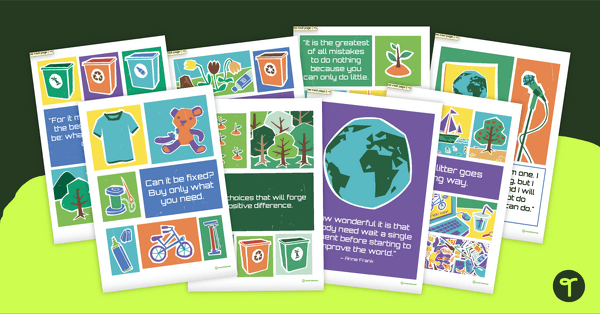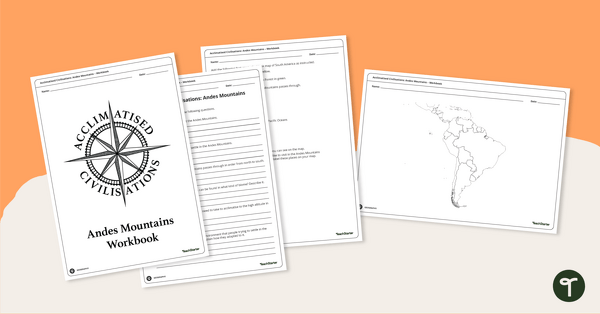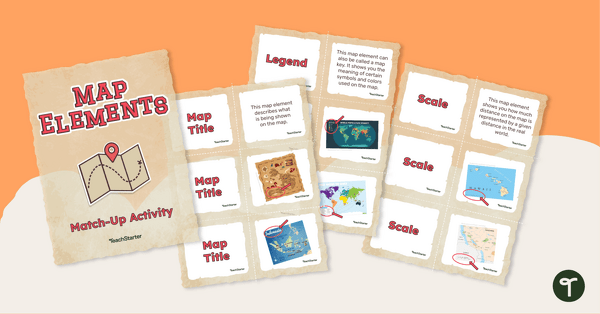Year 4
How people, places and environments interact, past and present
The Year 4 curriculum focuses on interactions between people, places and environments over time and space and the effects of these interactions. Students gain opportunities to expand their world knowledge and learn about the significance of environments, examining how people's need and want of resources over time has affected peoples, societies and environments. Specifically, students study European exploration and colonisation in Australia and elsewhere up to the early 1800s and life for Indigenous Australians pre- and post-contact. They examine the concept of sustainability, and its application to resource use and waste management, past and present, by different groups. The curriculum introduces the role of local government, laws and rules, and group belonging and how they meet people's needs. Themes of law and citizenship extend into their studies of diverse groups, the colonisation of Australia and other places, and how environmental sustainability is enacted.
The content provides opportunities for students to develop humanities and social sciences understanding through key concepts including significance; continuity and change; cause and effect; place and space; interconnections; roles, rights and responsibilities; and perspectives and action. These concepts may provide a focus for inquiries and be investigated across sub-strands or within a particular sub-strand context.
The content at this year level is organised into two strands: knowledge and understanding, and inquiry and skills. The knowledge and understanding strand draws from three sub-strands: history, geography and civics and citizenship. These strands (knowledge and understanding, and inquiry and skills) are interrelated and have been developed to be taught in an integrated way, which may include integrating with content from the sub-strands and from other learning areas, and in ways that are appropriate to specific local contexts. The order and detail in which they are taught are programming decisions.
Inquiry Questions
A framework for developing students' knowledge, understanding and skills is provided by inquiry questions. The following inquiry questions allow for connections to be made across the sub-strands and may be used or adapted to suit local contexts: inquiry questions are also provided for each sub-strand that may enable connections within the humanities and social sciences learning area or across other learning areas.
- How have laws affected the lives of people, past and present?
- What were the short- and long-term effects of European settlement on the local environment and Indigenous land and water management practices?
- What is the significance of the environment and what are different views on how it can be used and sustained, past and present?
(source: www.australiancurriculum.edu.au)
Achievement Standard
By the end of Year 4, students recognise the significance of events in bringing about change and the importance of the environment. They explain how and why life changed in the past and identify aspects of the past that have remained the same. They describe the experiences of an individual or group in the past. They describe and compare the diverse characteristics of different places at local to national scales. Students identify the interconnections between components of the environment and between people and the environment. They identify structures that support their local community and recognise the importance of laws in society. They describe factors that shape a person's identity and sense of belonging. They identify different views on how to respond to an issue or challenge.
Students develop questions to investigate. They locate and collect information and data from different sources, including observations to answer these questions. When examining information, they distinguish between facts and opinions and detect points of view. They interpret data and information to identify and describe distributions and simple patterns and draw conclusions. They share their points of view, respecting the views of others. Students sequence information about events and the lives of individuals in chronological order with reference to key dates. They sort, record and represent data in different formats, including large-scale maps using basic cartographic conventions. They reflect on their learning to propose action in response to an issue or challenge, and identify the possible effects of their proposed action. Students present ideas, findings and conclusions using discipline-specific terms in a range of communication forms.
(source: www.australiancurriculum.edu.au)
Achievement Standard
By the end of Year 4, students recognise the significance of events in bringing about change. They explain how and why life changed in the past and identify aspects of the past that have remained the same. They describe the experiences of an individual or group in the past.
Students sequence information about events and the lives of individuals in chronological order with reference to key dates. They develop questions about the past and locate, collect and sort information from different sources to answer these questions. They analyse sources to detect points of view. Students develop and present texts, including narrative recounts, using historical terms.
(source: www.australiancurriculum.edu.au)
Achievement Standard
By the end of Year 4, students describe the location of selected countries using compass direction. They describe and compare the characteristics of places in different locations at local to national scales. They identify the interconnections between components of the environment and between people and the environment. Students recognise the importance of the environment and identify different possible responses to a geographical challenge.
Students develop geographical questions to investigate and locate, collect and sort information and data from different sources to answer these questions. They record and represent data and the location of places and their characteristics in simple graphic forms, including large-scale maps that use the cartographic conventions of scale, legend, title and north point. They describe the location of places and their features using grid references and compass direction. Students interpret geographical data to identify spatial distributions and simple patterns and draw conclusions. They present findings using geographical terminology in a range of texts. They propose individual action in response to a local geographical challenge and identify some possible effects of their proposed action.
(source: www.australiancurriculum.edu.au)
Achievement Standard
By the end of Year 4, students identify structures and decisions that support their local community and recognise the importance of laws in society. They describe factors that shape a person's identity and sense of belonging.
Students develop questions about the society in which they live and locate and collect information from different sources to answer these questions. They examine information to distinguish between facts and opinions, identify points of view and to draw conclusions. They share their points of view, respecting the views of others, and identify the groups they belong to. Students present ideas and conclusions using discipline-specific terms in a range of communication forms.
(source: www.australiancurriculum.edu.au)
- Free Plan

National Tree Day Activity Pack
Celebrating National Tree Day with a pack of exciting activities!
- Plus Plan

Sustainability Quotes Poster Pack
Inspire sustainable practices in the classroom with a pack of printable Sustainability Quote posters.
- Plus Plan

Renewable & Non-renewable Resources – Instructional Slide Deck
Investigate the differences between renewable and non-renewable resources as well as the benefits and disadvantages of each, with this instructional slide deck.
- Plus Plan

Renewable and Non-renewable Energy Sources Poster Pack
Display and examine renewable and non-renewable energy sources, including wind, hydro, solar, natural gas, oil and coal.
- Plus Plan

Natural Resource Use in the 21st Century PowerPoint
Explore how natural resources are used by humans in the 21st century with an instructional slide deck.
- Plus Plan

How We Use Natural Resources Worksheet
Explore the characteristics of natural resources and what makes them useful in products and materials with this worksheet.
- Plus Plan

Acclimatised Civilisations: Andes Mountains – Workbook
Learn about the physical and human geography of the Andes mountains in South America with this inquiry-based mapping activity.
- Plus Plan

Features of Maps - Teaching Presentation
Explore the most common features of maps with this engaging teaching presentation.
- Plus Plan

Map Symbols Match-Up Activity
Practise identifying the symbols found on a map with a map symbol matching activity.
- Plus Plan

Maps and Globes Vocabulary Puzzles
Make your geography lessons more fun with a set of map and globe picture puzzles.
- Plus Plan

Feature of Maps - Task Cards
Explore the features of maps and globes with a set of multiple-choice task cards.
- Plus Plan

Renewable and Non-renewable Resources – Cut and Paste Worksheet
Sort renewable and non-renewable resources with this cut-and-paste worksheet.
- Plus Plan

NAIDOC Week 2022 Find-a-Word – Lower Years
A lower-years find-a-word puzzle emphasising topic words from information sheet about the NAIDOC 2022 theme: “Get Up! Stand Up! Show Up!”
- Plus Plan

Elements of a Map Match-up Activity
Use knowledge of the features of a map with this map element matching game.
- Plus Plan

Why Teach About Dreaming Stories? Poster
An educational poster providing a rationale for teaching Australian children about Dreaming stories.
- Plus Plan

Piecing Australia Together – A Reconciliation Puzzle
A puzzle to assemble when learning about National Sorry Day.
- Free Plan

Australian Place Name Origins Worksheet
A worksheet exploring the connection of Australian place names to First Nations languages.
- Plus Plan

Dreaming Stories - Multiple Intelligence Activities
A Multiple Intelligence activity planner to use in the classroom when learning about Dreaming Stories.
- Plus Plan

Blank Timeline Template
A blank editable timeline template to use as a recording worksheet in history lessons.
- Plus Plan

South American Flags Worksheets - BW
Fourteen black and white worksheets with flags from South America.
- Plus Plan

The Journal of James Cook - Writing Task
A journal writing task for students to investigate James Cook's voyage to Australia in the first person.
- Free Plan

Early Explorers - Inquiry Task
An inquiry-based assessment task for students to demonstrate their understanding of early explorers and the impacts they had on other societies.
- Plus Plan

Early Explorers Word Wall
A vocabulary word wall to display and use in the classroom when learning about early explorers up to the late eighteenth century.
- Plus Plan

Fifteenth Century Chinese Ship - Model Building Activity
A 15th-Century Chinese model ship building task to create in the classroom when learning about Chinese explorers.
- Free Plan

An Early Explorer's Map
An early explorer's map to display in the classroom when learning about European exploration.
- Plus Plan

Original Inhabitants of Australia Word Wall
A vocabulary word wall to display and use in the classroom when learning about the original inhabitants of Australia.
- Plus Plan

Australia's First Peoples Inquiry Task
An inquiry-based assessment task for students to demonstrate their understanding of the connection of Aboriginal and Torres Strait Islander peoples to Country.
- Free Plan

Develop a Habitat - Garden Project
A project-based assessment task for students to demonstrate their understanding of how habitats can be preserved and protected in and around where people live.
- Plus Plan

British Colonisation of Australia - Display Posters
A set of 3 British Colonisation posters to create a classroom display.
- Free Plan

British Colonisation Areas in Australia - 1846 Map and Worksheet
A map to display in the classroom when learning about areas in Australian that were colonised by the British in 1846.
- Plus Plan

British Colonisation of Australia - Title Poster
A poster to display in the classroom when teaching about the British Colonisation of Australia.
- Plus Plan

Survival Tips Inquiry Task
An inquiry-based assessment task for students to demonstrate their understanding of how vegetation is used across Australia by Aboriginal and Torres Strait Islander peoples in a variety of different ways.